ISSN ONLINE(2319-8753)PRINT(2347-6710)
ISSN ONLINE(2319-8753)PRINT(2347-6710)
| K.P.R.Sastry1, G.A.Naidu2, N.Umadevi3 8-28-8/1, Tamil Street, Chinna Waltair, Visakhapatnam-530017, India1 Department of Mathematics, Andhra university, Visakhapatnam-530003, India2 Department of Mathematics, Raghu Engineering College, Visakhapatnam-531 162, India3 |
| Related article at Pubmed, Scholar Google |
Visit for more related articles at International Journal of Innovative Research in Science, Engineering and Technology
Malhotra [7] proved a common fixed point theorem in fuzzy metric spaces for occasionally weakly compatible mappings with integral type in equality by reducing its minimum value. In this paper we prove a common fixed point theorem in fuzzy metric spaces for occasionally weakly compatible mappings with integral type inequality involving some special type of Lebesgue integrable functions.
Keywords |
| Fuzzy metric space, occasionally weakly compatible (owc) mappings, common fixed point. |
| Mathematical Subject Classification (2010): 47H10, 54H25 |
INTRODUCTION |
| Fuzzy set was introduced by Zadeh [15].Kramosil and Michalek [6] introduced the notion of a fuzzy metric space, George and Veermani [4]modified the notion of fuzzy metric spaces with the help of continuous t-norms. Grabiec[3],Subramanyam[13], Vasuki[14], Pant and Jha [9]obtained some analogous results proved by Balasubramaniam [1] et al. Subsequently, it was developed extensively by many authors and used in various fields. Jungck [5] introduced the notion of compatible maps for a pair of self maps.George and Veermani [4], Sessa [11] initiated the tradition of improving commutative condition in fixed point theorems by introducing the notion of weak commuting property. Further Jungck and Rhoades [5] gave a more generalized condition defined as compatibility in metric spaces. Jungck and Rhoades [5] also introduced the concept of weakly compatible maps.Malhotra [7] proved a common fixed point theorem in fuzzy metric spaces for occasionally weakly compatible mappings with integral type in equality by reducing its minimum value. In this paper we prove a common fixed point theorem for selfmaps on fuzzy metric spaces for occasionally weakly compatible mappings with integral type inequality involving some special type of Lebesgue integrable functions (Definition [2.1]). |
| Definition 1.1 :( Zadeh.L.A. [14]) A fuzzy set A in a nonempty set X is a function with domain X and values in 0,1 . |
| Definition 1.2: ( Schweizer.B. and Sklar. A. [9]) A function ∗ âÃËö 0,1 × 0,1 → 0,1 is said to be a continuous t-norm if ∗ satisfies the following conditions: |
 |
| Definition 1.3: (Kramosil. I. and Michalek. J. [5]) A triple (X, M,*) is said to be a fuzzy metric space (FM space, briefly) if X is a nonempty set, * is a continuous t-norm and M is a fuzzy set on X2 × [0, ∞) satisfying the following conditions: |
 |
| Then M is called a fuzzy metric space on X. |
| The function M(x, y, t) denotes the degree of nearness between x and y with respect to t. |
 |
| Definition 1.6: (George.A. and Veeramani.P. [3]) Let (ïÿýïÿý, ïÿýïÿý,∗) be a fuzzy metric space. |
| Then, |
 |
| Definition 1.7: (Malhotra.S.K.Naveen Verma and Ravindra Sen [6]) Two self maps f and g of a set ïÿýïÿýare occasionally weakly compatible (owc) iff there is a point ïÿýïÿý in ïÿýïÿý which is a coincidence point of ïÿýïÿý and ïÿýïÿý at which ïÿýïÿý and ïÿýïÿý commute. |
 |
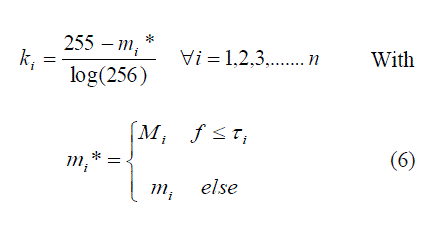 |
| Malhotra et.al.[7] proved a common fixed point theorem for four self maps on a fuzzy metric space which satisfy an inequality involving a function ∅ ∈ Φ. |
| Theorem 1.11: (Malhotra et.al.[7]) Let (ïÿýïÿý, ïÿýïÿý,∗) be a complete fuzzy metric space and let F, G, S and T are self–mapping of X. Let the pairs {F,S} and {G ,T} be owc . If there exists ïÿýïÿý ∈ (0,1) such that |
 |
 |
II. MAIN RESULT |
| In this section we introduce a special class of Lebesgue integrable function and use this notion to prove a fixed point theorem. |
 |
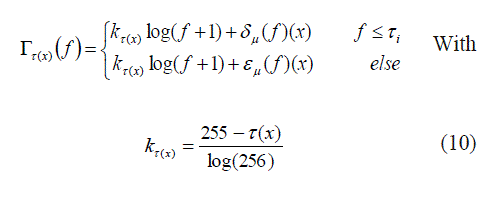 |
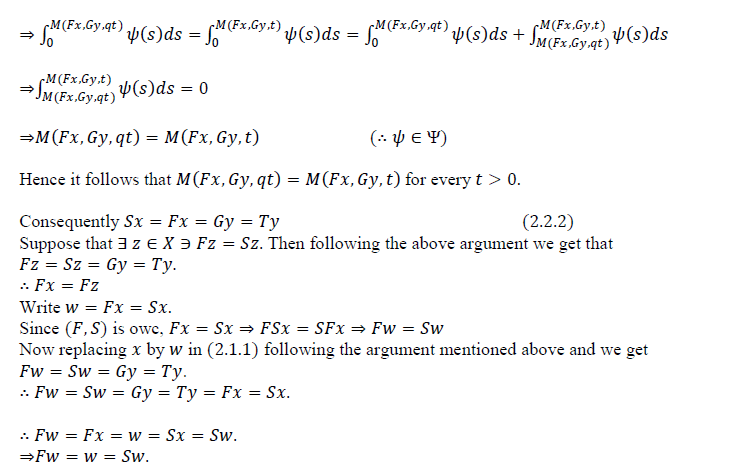 |
| Hence ïÿýïÿý is a common fixed point of ïÿýïÿý and ïÿýïÿý. From (2.2.2) we have ïÿýïÿýïÿýïÿý = ïÿýïÿýïÿýïÿý = ïÿýïÿý,followingthe above argument follows that ïÿýïÿýïÿýïÿý = ïÿýïÿýïÿýïÿý = ïÿýïÿý. Thus ïÿýïÿý is a common fixed point of ïÿýïÿý, ïÿýïÿý, ïÿýïÿý and ïÿýïÿý. |
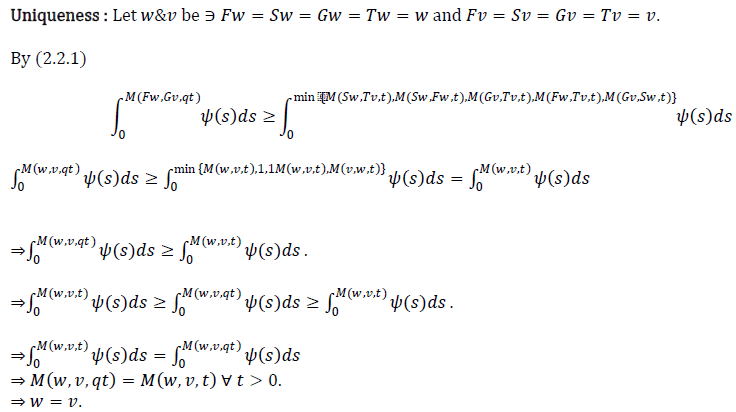 |
| Hence common fixed point of F, G, S and T is unique. |
 |
| Proof : By (2.3.1) |
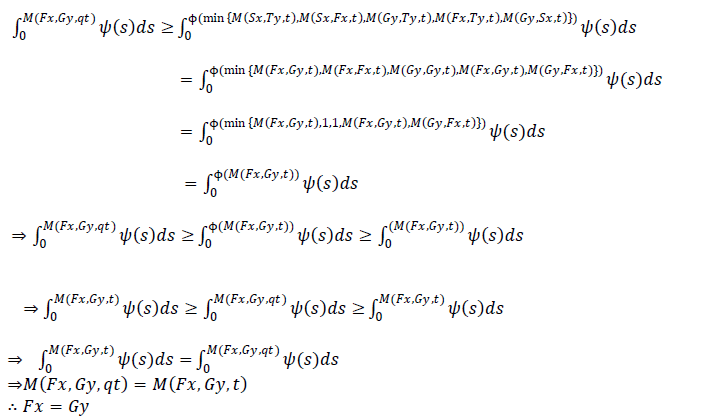 |
| Hence result follows from theorem (2.2) |
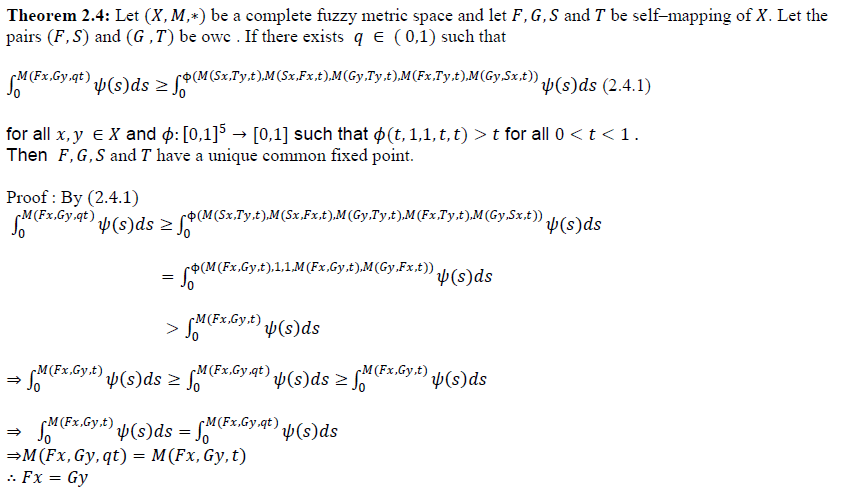 |
| Hence result follows from theorem (2.2) |
 |
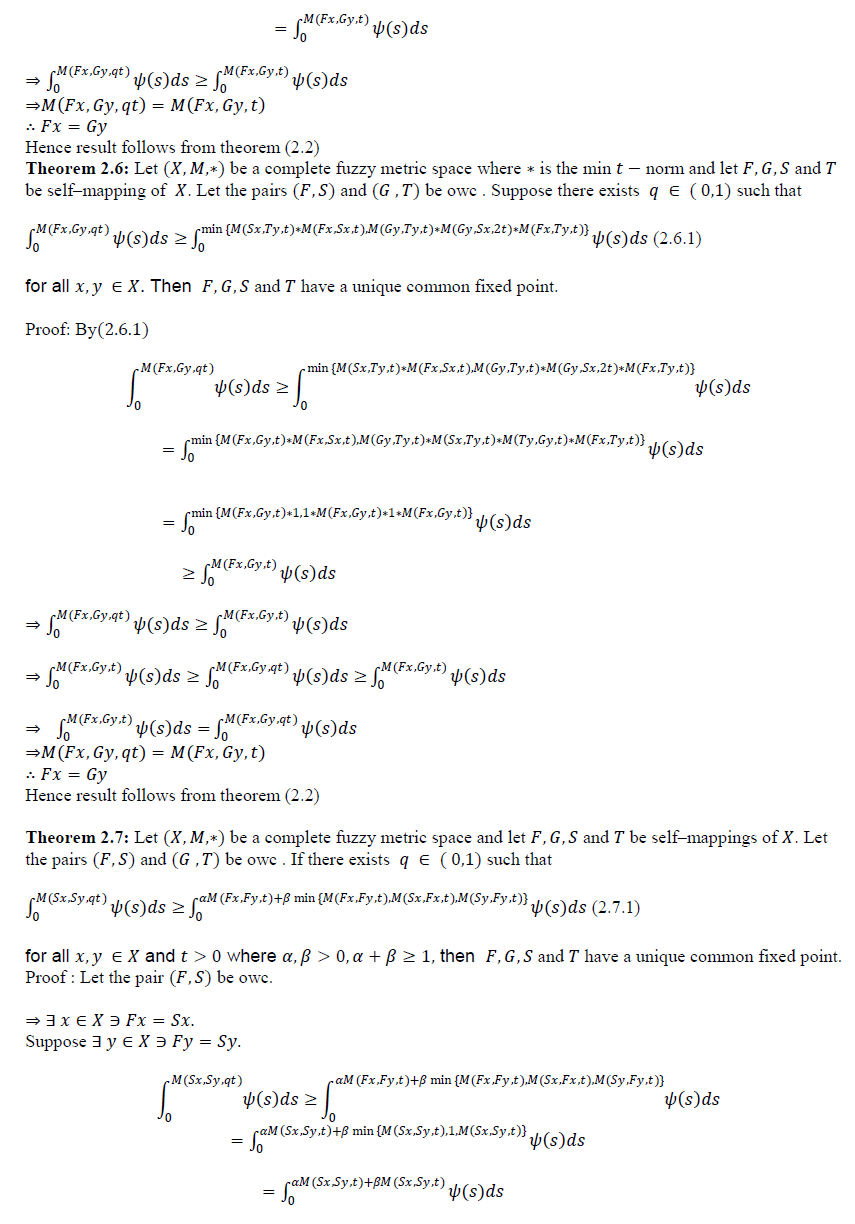 |
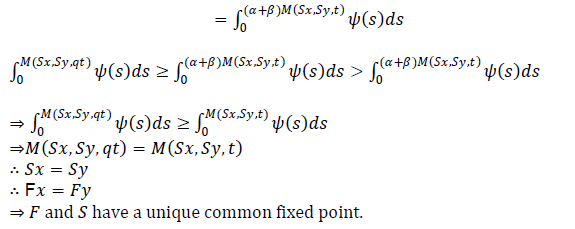 |
ACKNOWLEDGEMENT |
| The third author (N.U) is grateful to Raghu Engineering College authorities for giving permission and the management of SITAM for giving facilities to carry on this research. |
References |
|